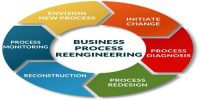Project final report: The Final Project Report summarizes the work of the team and its results. It should clearly communicate the project’s problem, the communities, or customers its influences, and the solution proposed or delivered. It is intended to read as a professional business document. For continuing IPRO projects, the Final Project Report should allow the project to transition seamlessly between teams.
The project report is the report made about a project or a plan and includes the overall report of the plan, all the details associated with it and the overall outcome of the plan Any successful project plan must contain the following nine elements:
(1) Overview: This is a short summary of the objective and scope of the project. It is directed to top management and contains a statement of the goals of the project, a brief explanation of their relationship to the firm’s objectives, a description of the managerial structure that will be used for the project, and a list of the major milestones in the project schedule.
(2) Objective: This contains a more detailed statement of the general goals noted in the overview section. The statement should include profit and competitive aims as well as technical goals.
(3) General approach: This section describes both the managerial and the technical approaches to the work. The technical discussion describes the relationship of the project to available technologies.
(4) Contractual aspects: This critical section of the plan includes a complete list and description of all the reporting requirement, customer-supplied resources, liaison arrangements, advisory committees, project review and cancellation procedures, proprietary requirements, any specific management arrangement, as well as the technical deliverables and their specifications, delivery schedules, and a specific procedure for changing of the above.
(5) Schedules: This section outlines the various schedules and lists all milestone events. Each task is listed, and the estimated time for each task should be obtained from those who will do the work.
(6) Resources: There are two primary aspects to this section. The first is the budget. Second, monitoring and control procedure should be described.
(7) Personnel: This section lists the expected personnel requirements of the project. Special skills, types of training needed, possible recruiting problems, legal or policy restriction on workforce composition, and any other special requirements, such as security clearance, should be noted here.
(8) Risk management plans: This covers potential problems as well as potential lucky breaks that could affect the project. Sometimes it is difficulties to convince planners to make a serious attempt to anticipate potential difficulties or benefits.
(9) Evaluation methods: Every project should be evaluated against standards and by methods established at the project’s inception; allowing for both the direct ancillary goals of the project.
The process of developing the project plan varies from organization to organization, but any project plan must contain the above elements.















